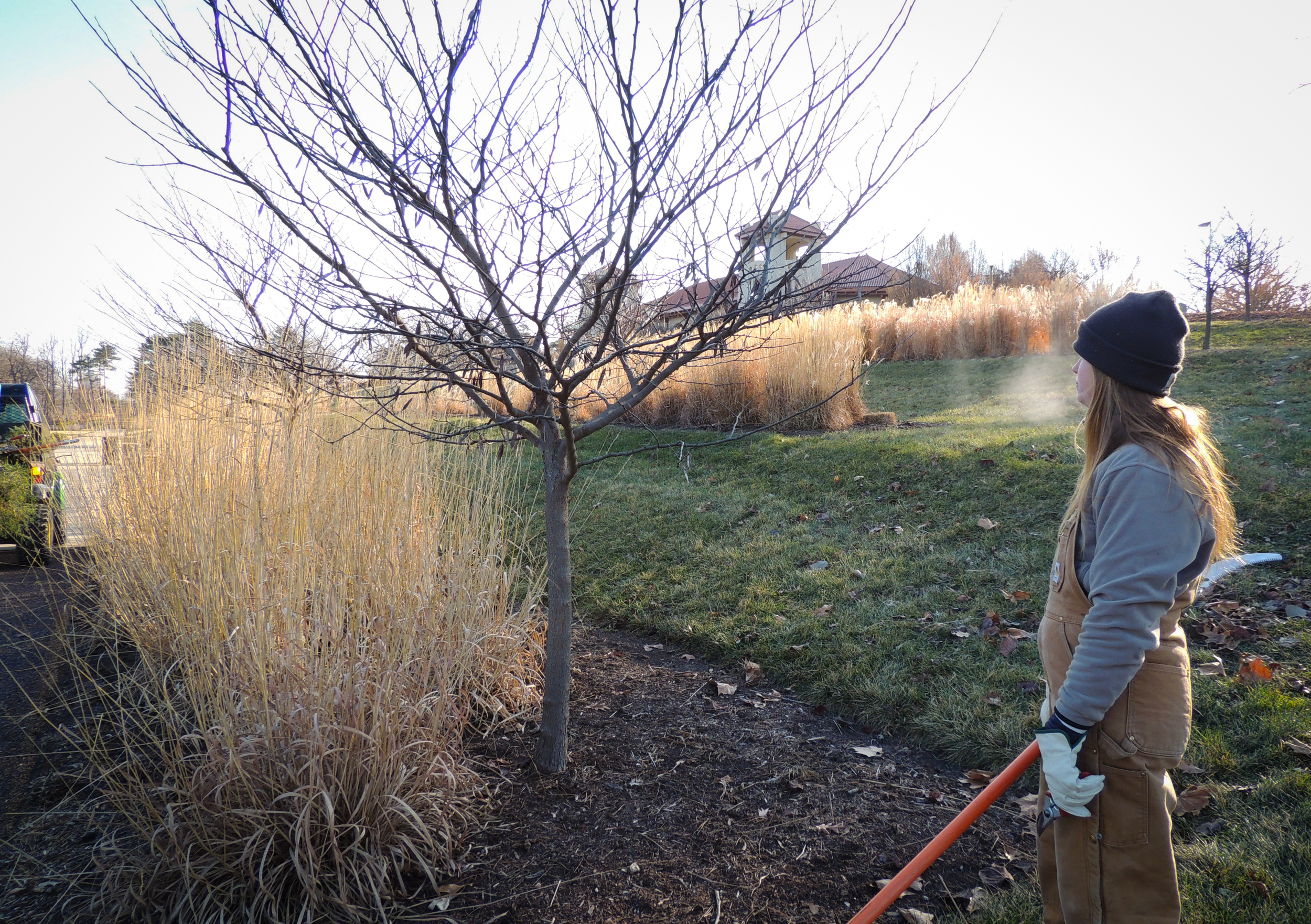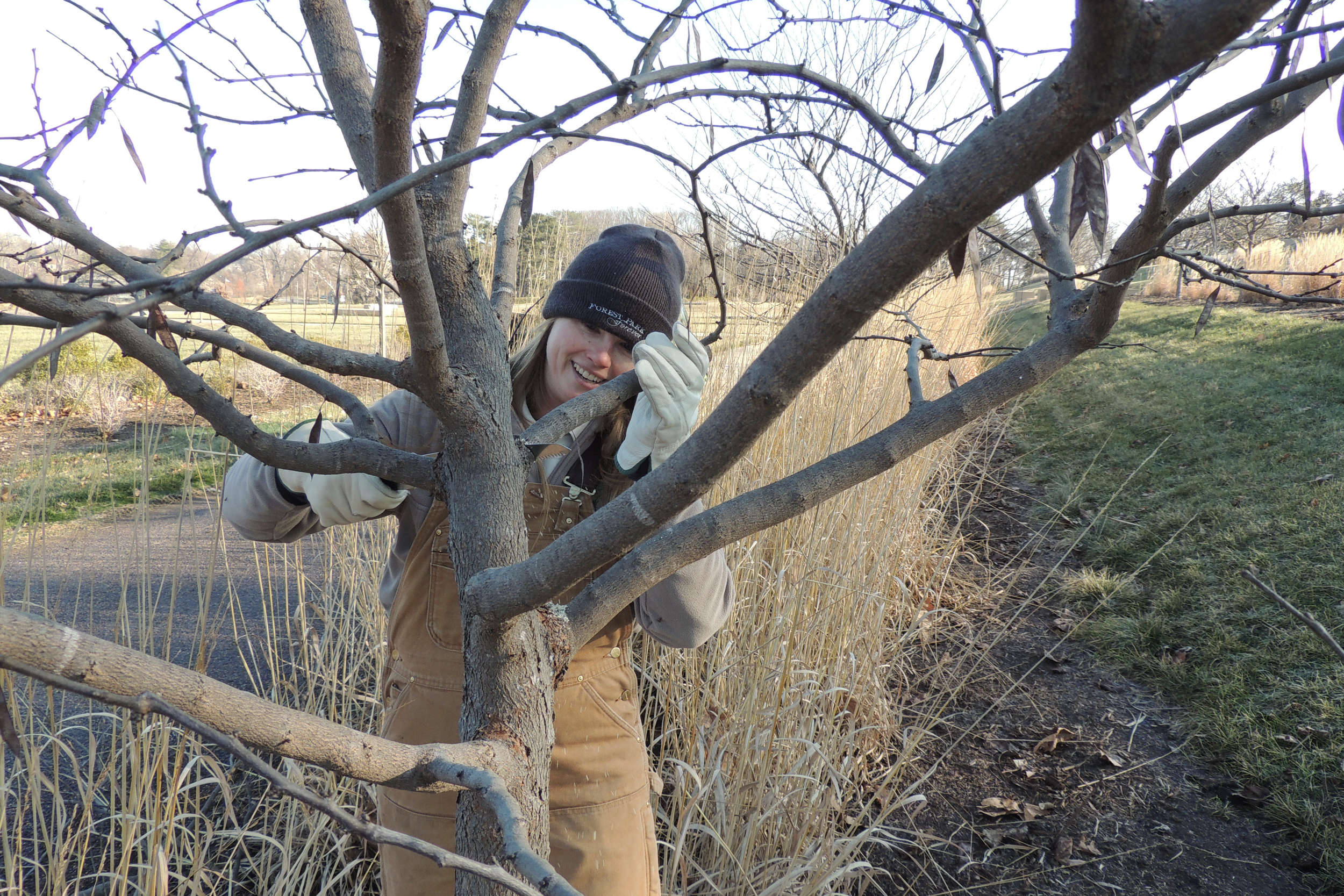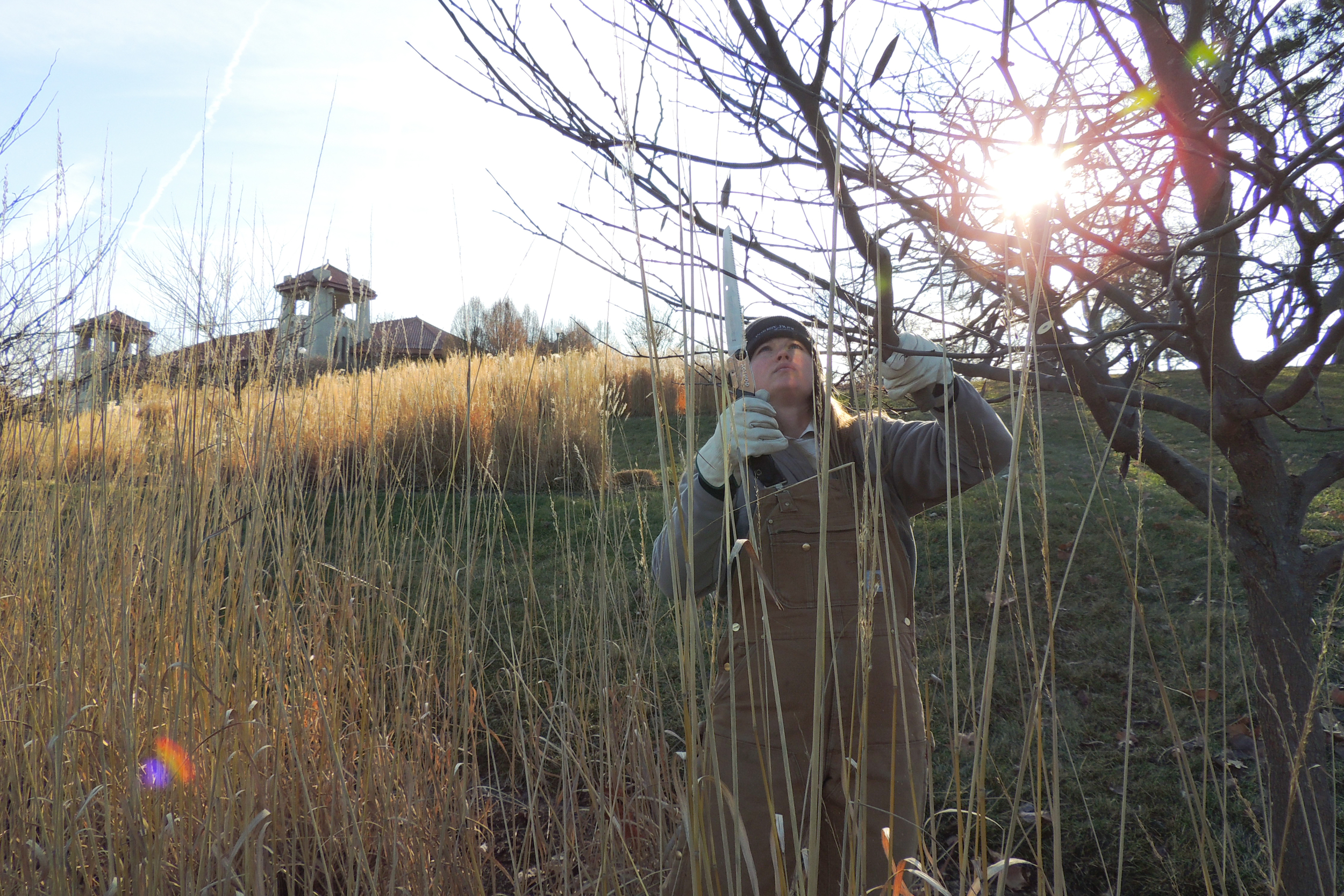Winter on Government Hill: Behind the Scenes with FPF Horticulturist Crystal Camp
On a recent Friday morning, Crystal Camp stretched her hand toward Government Hill to show me her outdoor office. She stood inside the freshly repainted World’s Fair Pavilion in thickly-lined, camel-colored bib overalls, hardy work boots, a fleece pullover and a knit Forest Park Forever cap. Camp’s zone spans nearly 40 acres of Forest Park, and she’s worked for Forest Park Forever since 2009, first as an intern, then as a gardener and now as a horticulturist.
Named for the international global diplomats who pitched their tents on its grass at the 1904 World’s Fair, Government Hill was known as Hippie Hill during the 1960s and ’70s, thanks to an assortment of musicians who would show up, unannounced, to play free concerts. The World’s Fair Pavilion overlooks this iconic hill, but it wasn’t actually built until 1909 with proceeds from the Fair. A thank-you gift from the Louisiana Purchase Exposition Company, it stands in the space once occupied by the Missouri State Pavilion, which burned shortly before the Fair closed.
'Hippie Hill' in 1969
For all the beauty and wonder of the World’s Fair, it did leave a dent in the Forest Park tree population. Camp says that because some 200 acres of wooded land were clear-cut in preparation for the Fair, it’s been impossible to replace them all. However, Forest Park Forever and the City of St. Louis plant hundreds of trees yearly, and the grand total value of the Park’s trees is an estimated $23 million.
“This park is for the people. We can’t have branches splitting every time a storm rolls through. We prune a lot of our trees for future generations who will see the benefits.”
It is the trees in Zone 5 that take up most of Camp’s time during the winter months. (FPF’s staff manage the Park’s grounds in seven zones.) Year-round, Crystal retrieves downed limbs and prunes trees by hand no matter the weather, but “What do you do all winter?” is one of the most frequent questions she gets this time of year. And that question inspired her to offer the tour she calls “Winter on Government Hill.”
First, she pointed out the trees directly in front of the Pavilion’s towers: coralberry crabapples prized for their wide canopies. Her main pruning concern is to keep branches out of visitors’ eyes; secondarily, as with any trees, she prunes off dead, diseased or crossed branches and corrects structural issues. Stepping beneath one of the crabapples, Camp pointed to a bumpy knob protruding from the trunk. Though it resembles a tumor, it’s actually a sign of health, not disease. This is the tree’s way of healing itself by compartmentalizing an area of decay. Through this process, healthy cells form walls around a damaged or cut area to protect it from disease. When a tree does not compartmentalize, an open wound is exposed where there should be protective bark, inviting infection.



Camp explained that to properly remove a tree branch, she hacks off the weight of the branch first, leaving a stump and minimizing the risk of the tree splitting. Then she cuts at the bark-branch collar, at the branch’s natural angle rather than vertically along the trunk. Removing branches correctly strengthens the tree over time, as does guiding branches around a central leader so there’s no competition among the branches. “This park is for the people,” said Camp. “We can’t have branches splitting every time a storm rolls through. We prune a lot of our trees for future generations who will see the benefits.”
Stepping past silver linden and whitebud trees from Waldbart and Sons Nursery in Florissant, Camp warned about protecting against ice damage. Before winter’s chill sets in for the season, workers blow out the irrigation system so water doesn’t freeze the pipes, and they drain the water from Kerth Fountain.
The fountain is a key feature of Government Hill’s brilliant hardscape design. When you look up from the base of the fountain toward the pavilion, the sidewalks disappear. Wheelchairs and strollers can safely roll up and down the hill by sidewalk, but the paths are invisible from the bottom of the hill. Stairs are visible, but railings line only the outermost steps. The design achieves a clever blend of functionality and visual appeal.
Photograph by Randy Allen
This vanishing hardscape showcases the splendor of Government Hill — the landscape. More than 10,000 perennials beautify the hill throughout the year. In winter, these plants — many of which are native to the area — benefit Forest Park’s wildlife by providing seed heads for food, as well as barriers from wind and cold. About half of the perennials are ornamental grasses — Hameln dwarf fountain grass at the base, towering Cloud Nine switch grass one tier up, aggressive Indian Grass above that and dramatic Miscanthus Nippon still higher.
Camp keeps her grasses around all winter for windbreaks and winter interest, and she complements them with smaller beauties like Russian Sage, Shasta daisies, peonies, astilbes and blazing star. Different plants are situated on either side of the grasses, so visitors can appreciate different views on the way up and down the hill.
As we wind up this chilly morning tour, Camp smiles at the view in front of her. “This is all by design.”
